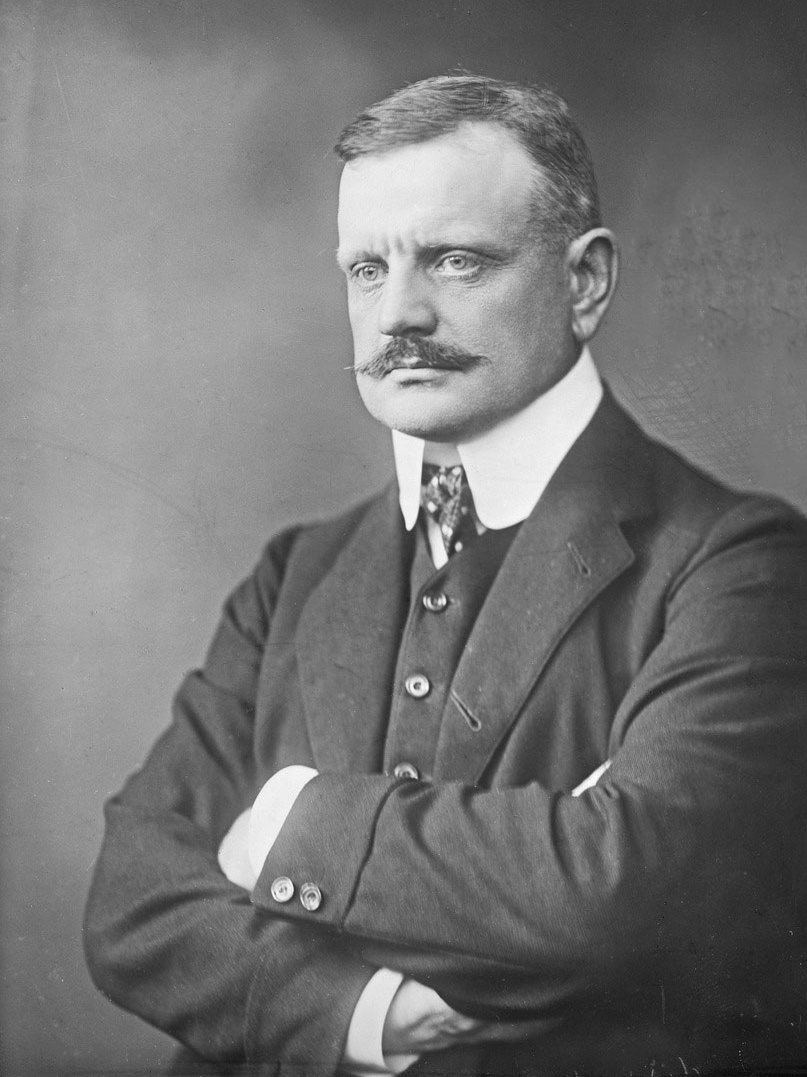- Portrait
- History

Jean Sibelius is considered Finland’s great composer, who gave the country its own musical idiom with his tone poems inspired by the national epic Kalevala. Hardly anyone associates the Finn with Berlin – but the German metropolis played an important role in his artistic career.
Young, unknown, but highly talented, Sibelius first came to study in Berlin in 1889. The then 24-year-old stayed only ten months and experienced a period of doubt and depression – relatively unmotivated to create something of his own. He was more interested in Berlin’s cultural life – especially the concerts of the Philharmoniker – than in the old-fashioned lessons with his teacher Albert Becker. He was particularly impressed by chief conductor Hans von Bülow’s interpretations of Beethoven’s symphonies. He engaged intensively with the various musical developments of the time. And he summarised: “The greatest significance of my stay in Berlin was that I was able to hear so much, both orchestral and chamber music.”
From student to master
Twelve years later, in November 1902, Sibelius returned to Berlin – under completely different circumstances. Thanks to his tone poems and his First Symphony, he was then considered his country’s leading composer. The Berliner Philharmoniker included a work by the Finnish composer on their concert programme for the first time: the tone poem En saga, which Sibelius conducted himself and which was praised by the press as a “spirited, thrilling work”. Finlandia followed in 1904 and the performance of the Second Symphony in 1905. One concert review read: “The symphony is a work whose acquaintance was worth making.” According to the critic, the orchestral treatment in particular shows “that it is still possible with the classical symphony orchestra to achieve a great deal of thoroughly fresh, novel sound effects”. However, Sibelius’ works were not part of the Philharmoniker’s renowned subscription concerts, but of the far less attended “Novelty Concerts”, which were overseen artistically by the composer Ferruccio Busoni. It was not until 1911 that Arthur Nikisch, the orchestra’s chief conductor at the time, conducted the tone poem Finlandia as part of the main Philharmoniker concerts. From the 1920s and 30s onwards, Sibelius’ compositions appeared frequently on the programmes of the Philharmoniker, conducted by Wilhelm Furtwängler, Thomas Beecham and Eugen Jochum, among others. In March 1941, Clemens Krauss conducted a concert to celebrate the composer’s 75th birthday with the first performance of Tapiola.
Respected symphonies, well-loved violin concerto
After the Second World War, it was above all Sergiu Celibidache and later Herbert von Karajan who presented works by the Finnish composer with the Berliner Philharmoniker on a regular basis. The 2010/11 season saw the first complete performance of the seven symphonies under the baton of Sir Simon Rattle, which was repeated in 2015 to mark the 150th anniversary of Sibelius’ birth, and released as a CD and Blu-ray edition as well as on vinyl. The work by Sibelius that the Berliner Philharmoniker have performed most often, however, is the Violin Concerto: in October 1905, Richard Strauss conducted the premiere of the new version. The soloist was Carl Halir, then concertmaster of the Königliche Hofkapelle. “A work written with imagination, equally captivating in colour and design", was the verdict of the critic of the Musikalisches Wochenblatt. Many violinists have since shone with the concerto with the Philharmoniker, from Franz von Vecsey, Joseph Joachim’s pupil and dedicatee of the work, to Pinchas Zukerman, Itzhak Perlman, Gidon Kremer and – more recently – Leonidas Kavakos, Nikolaj Znaider, Lisa Batiashvili and Janine Jansen.